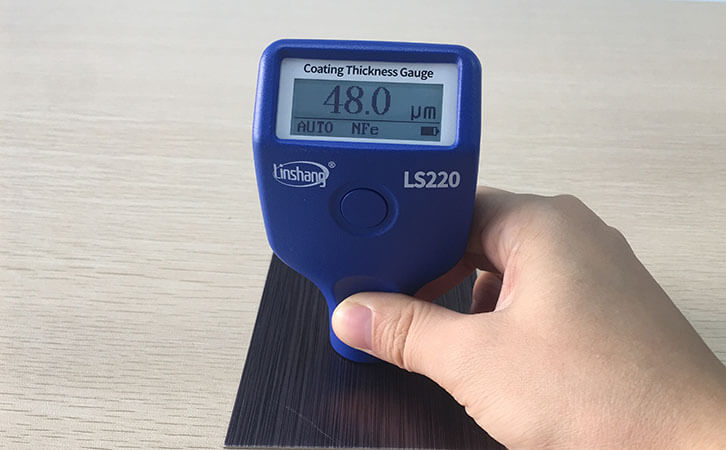Paint Thickness Gauge | Factors Affecting the Plating Layer Thickness
The effect of the plating layer thickness on the quality is very important. There are two main factors that affect the plating thickness: current density and plating time.
Before introducing the current density, we must first understand the principle of electroplating. It is a process of reducing metal ions to metal to form a plating layer according to the principle of electrolysis. The amount of reduced metal ions is proportional to the amount of electricity. Therefore, in the electroplating process, factors affecting the plating thickness. It is related to the current density. In other words, the higher the current density, the faster the deposition rate of the coating.
The second factor that affects the plating layer thickness is the long plating time. The longer the time, the more plating is deposited. Therefore, in general, we can increase or decrease the current density to affect the plating thickness. The factors that affect the current density are mainly temperature, main salt concentration and stirring. When the temperature increases, the current density increases; under the same conditions. Both Faraday's law and the electrode potential equation can be used as the basis for analyzing the factors affecting the coating thickness.
First of all, according to Faraday's law, the amount of metal ions reduced to metal at the electrode is proportional to the amount of electricity. Therefore, the main factor affecting the plating layer thickness is the current. The thickness of the electrode, the influence of current and time, the temperature, the concentration of the main salt, and the area of the anode will all affect the coating thickness. The main salt concentration in the normal range can ensure that the electroplating can work under normal current and the electroplating process can be performed.
There is another concept that everyone needs to understand, that is, cathodic coating and anodic coating. Cathodic coating generally refers to a type of coating where the potential of the coating is positive to the potential of the base metal under specific conditions, otherwise it is called anodic coating. When distinguishing what kind of coating is, it should be determined by the difference between the potential of the coating under the conditions of the medium and the potential of the base metal. Understanding this is mainly to let you choose the plating type you need according to the purpose of the coating.
After understanding the factors that affect the main thickness of the electroplated layer and the standard of the electroplated layer thickness, the next thing is definitely to know whether the electroplated layer thickness has reached the standard. Here we will introduce to you, an instrument that can accurately measure the electroplated layer - paint thickness gauge, which is very simple to use. It has high accuracy and is used in a very wide range.
- High precision coating thickness gauge for used car
- Automotive paint protection films coating thickness gauge
- Plating Thickness Measuring Instrument for Detecting Anti-corrosion Coating
- Linshang LS220, LS191, LS160A– Necessary for Car Cover Inspection
- Coating Thickness Gauge for Second Hand Vehicle
- Zero Adjustment Step of Coating Thickness Gauge
